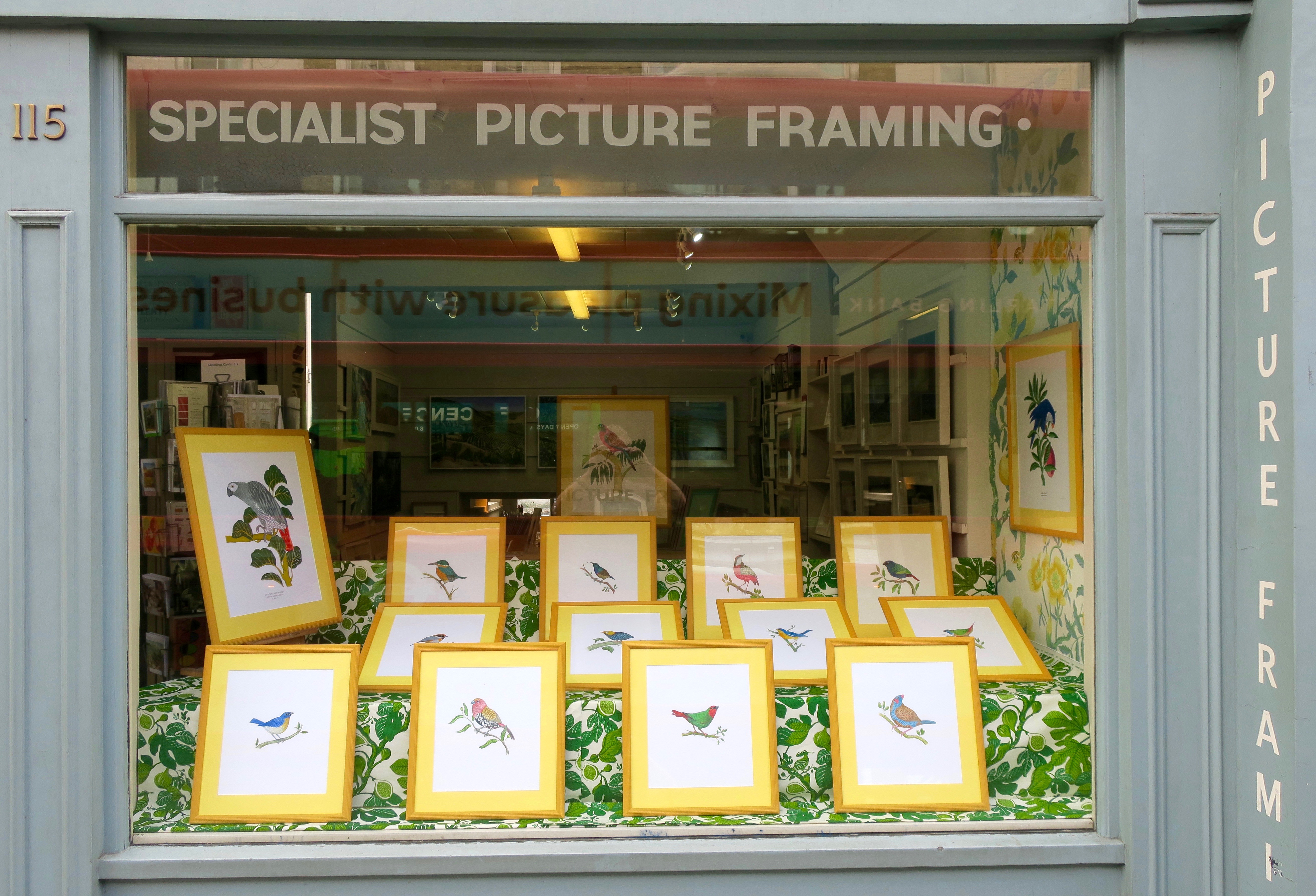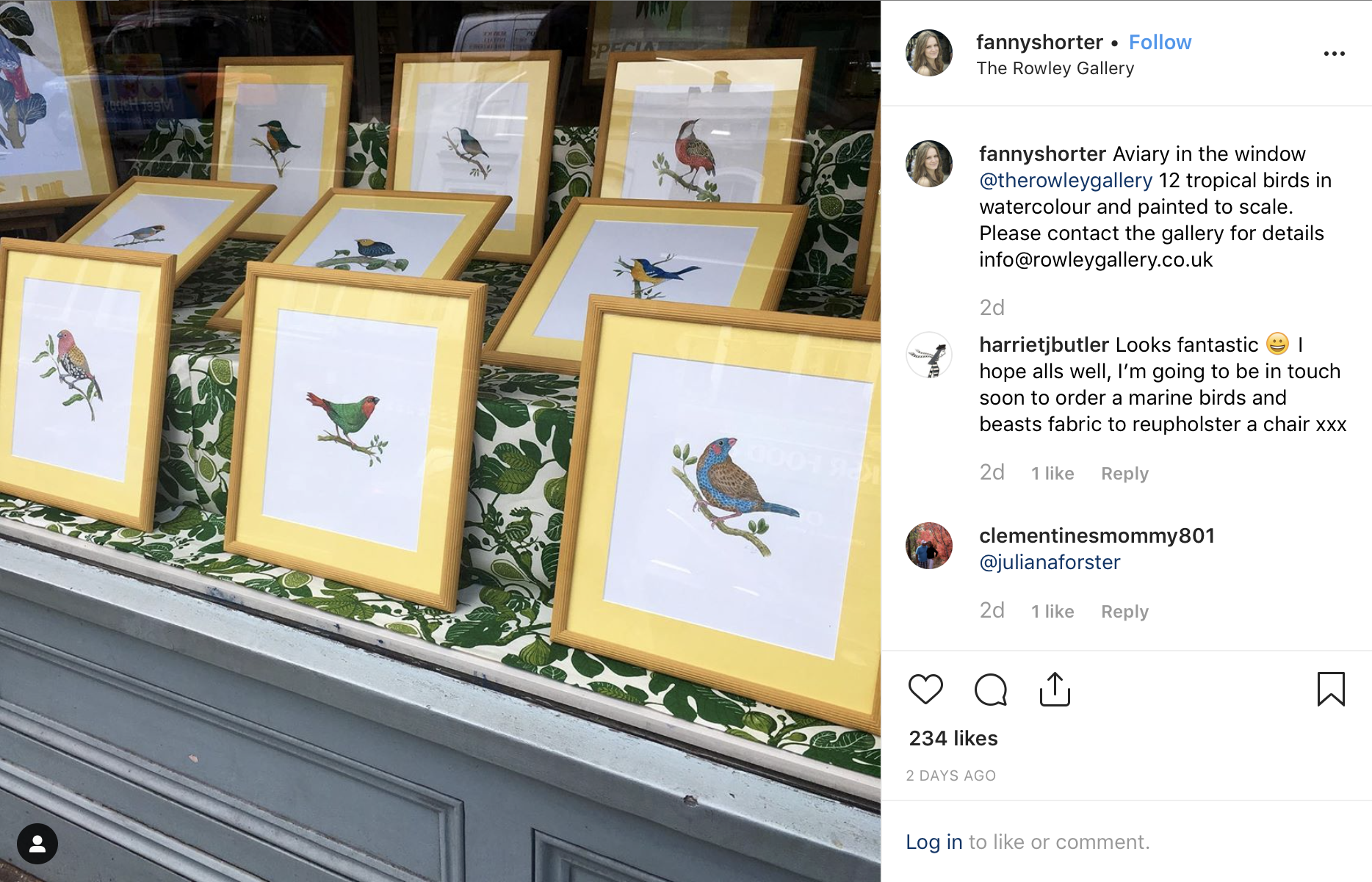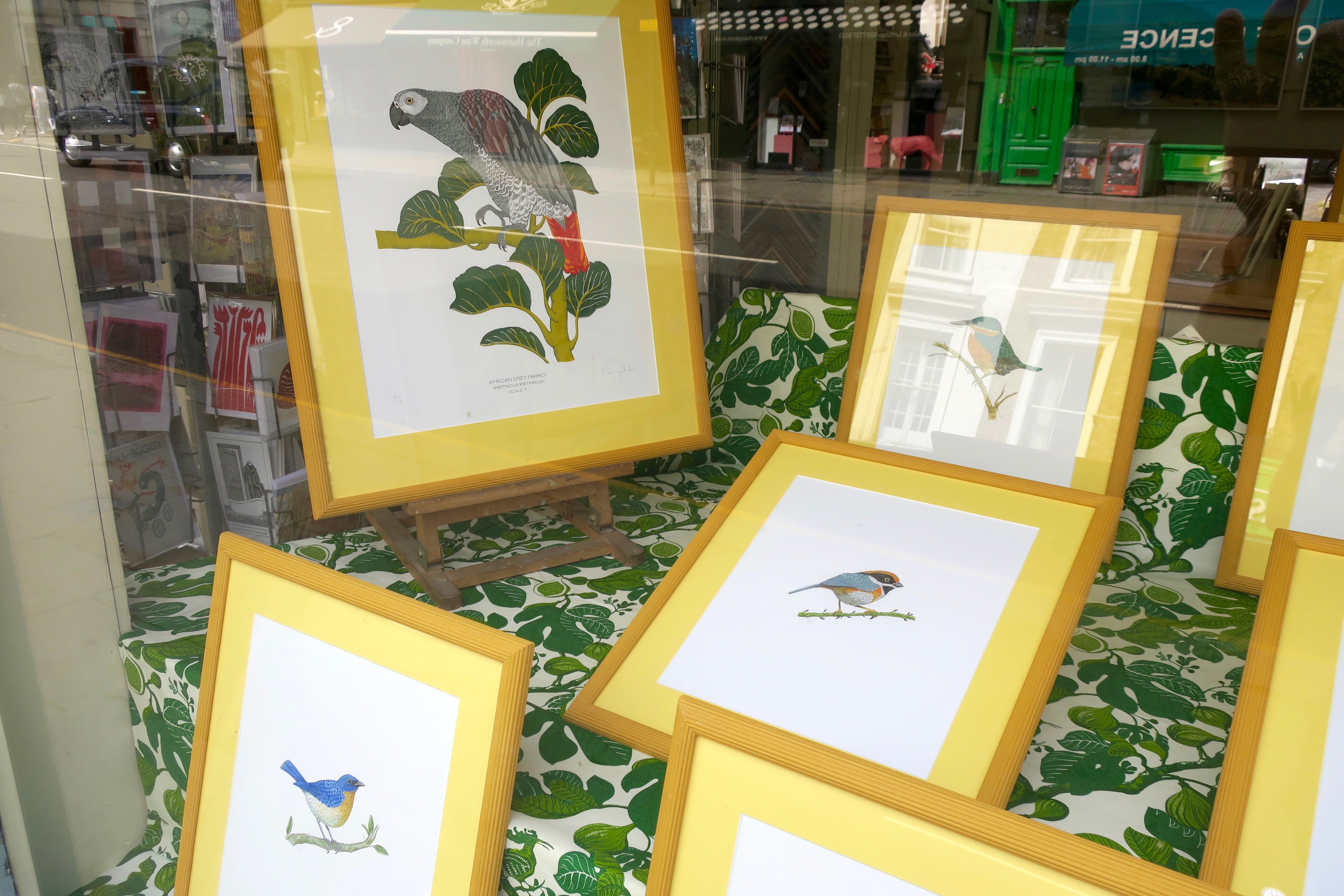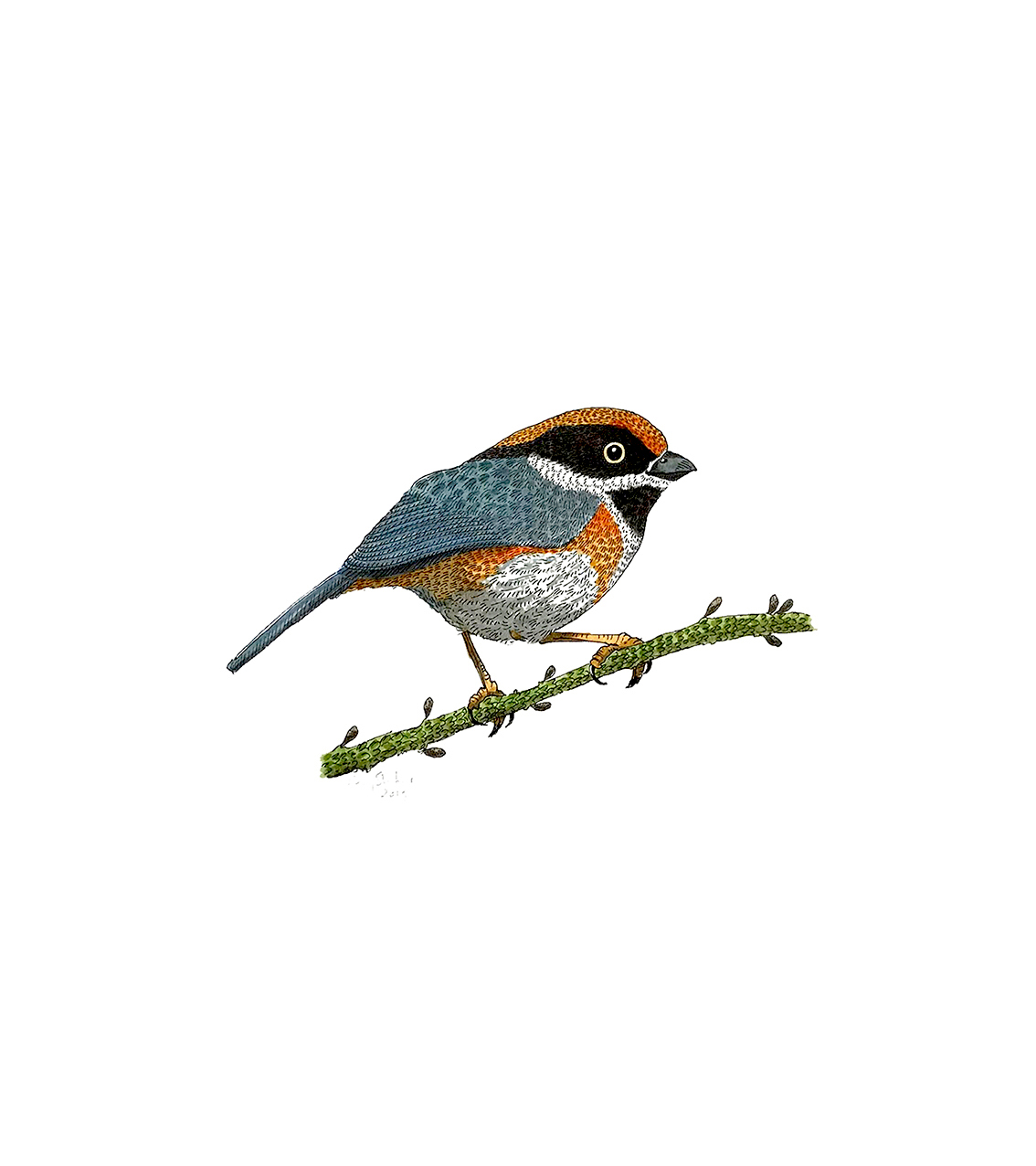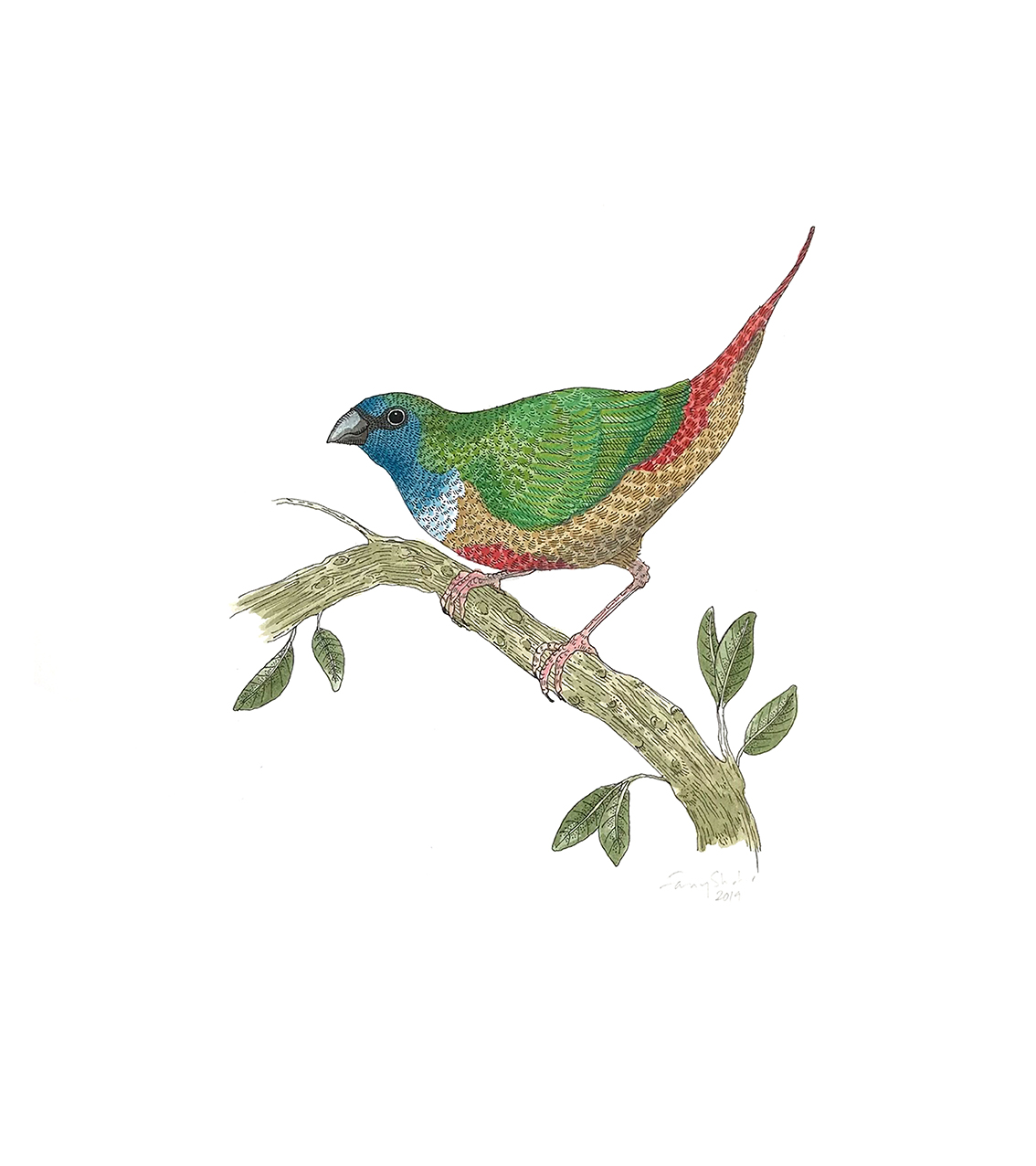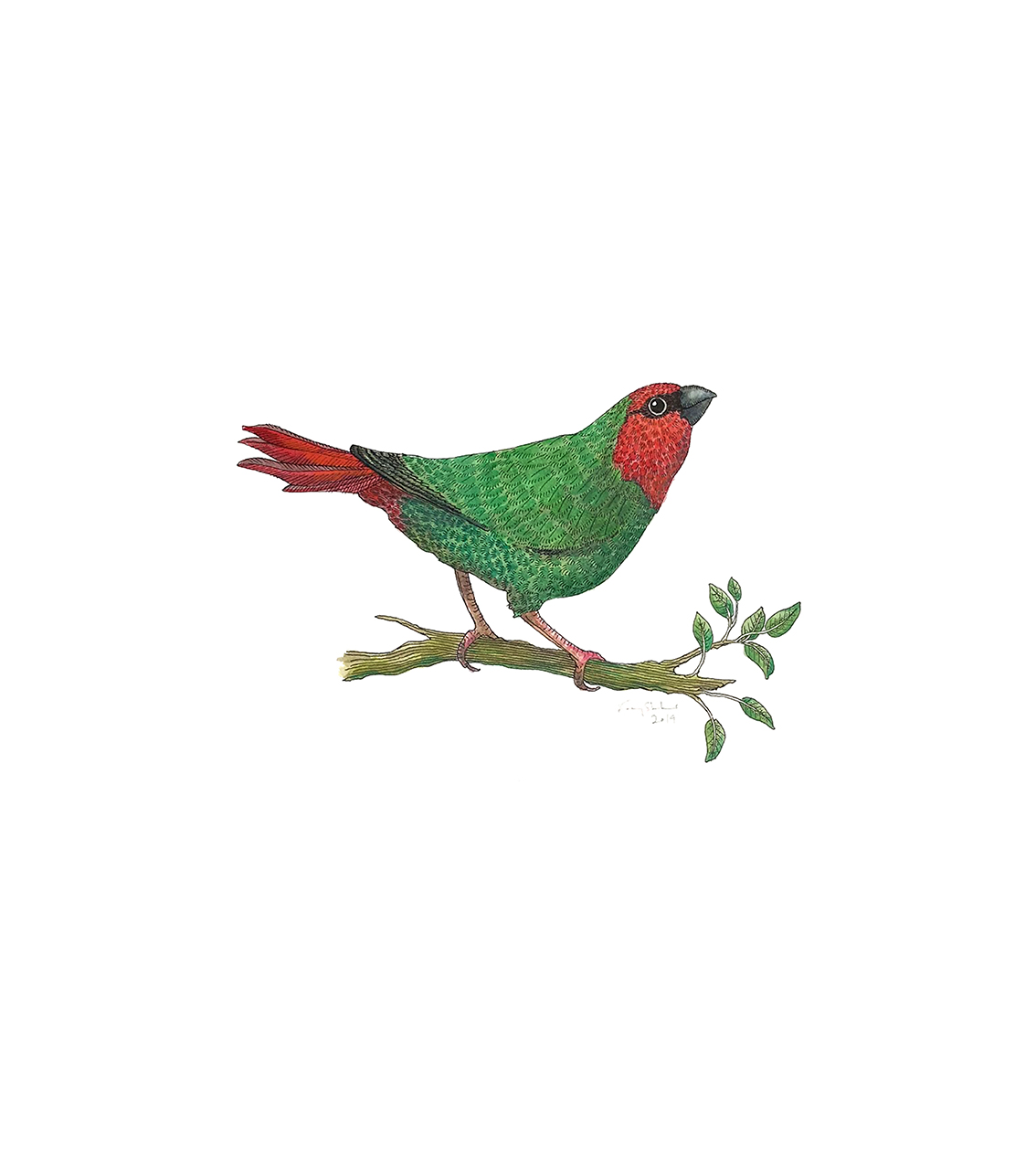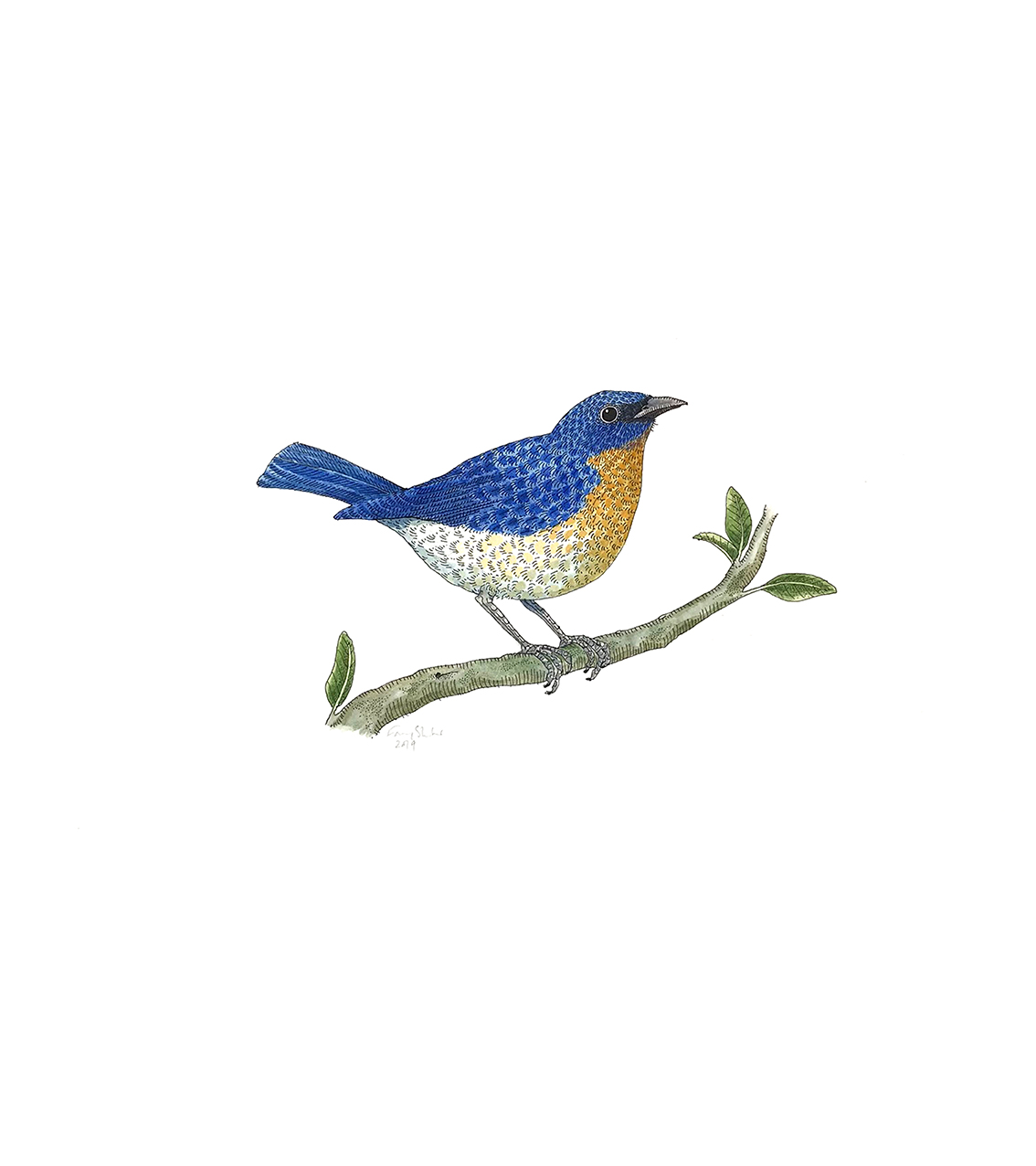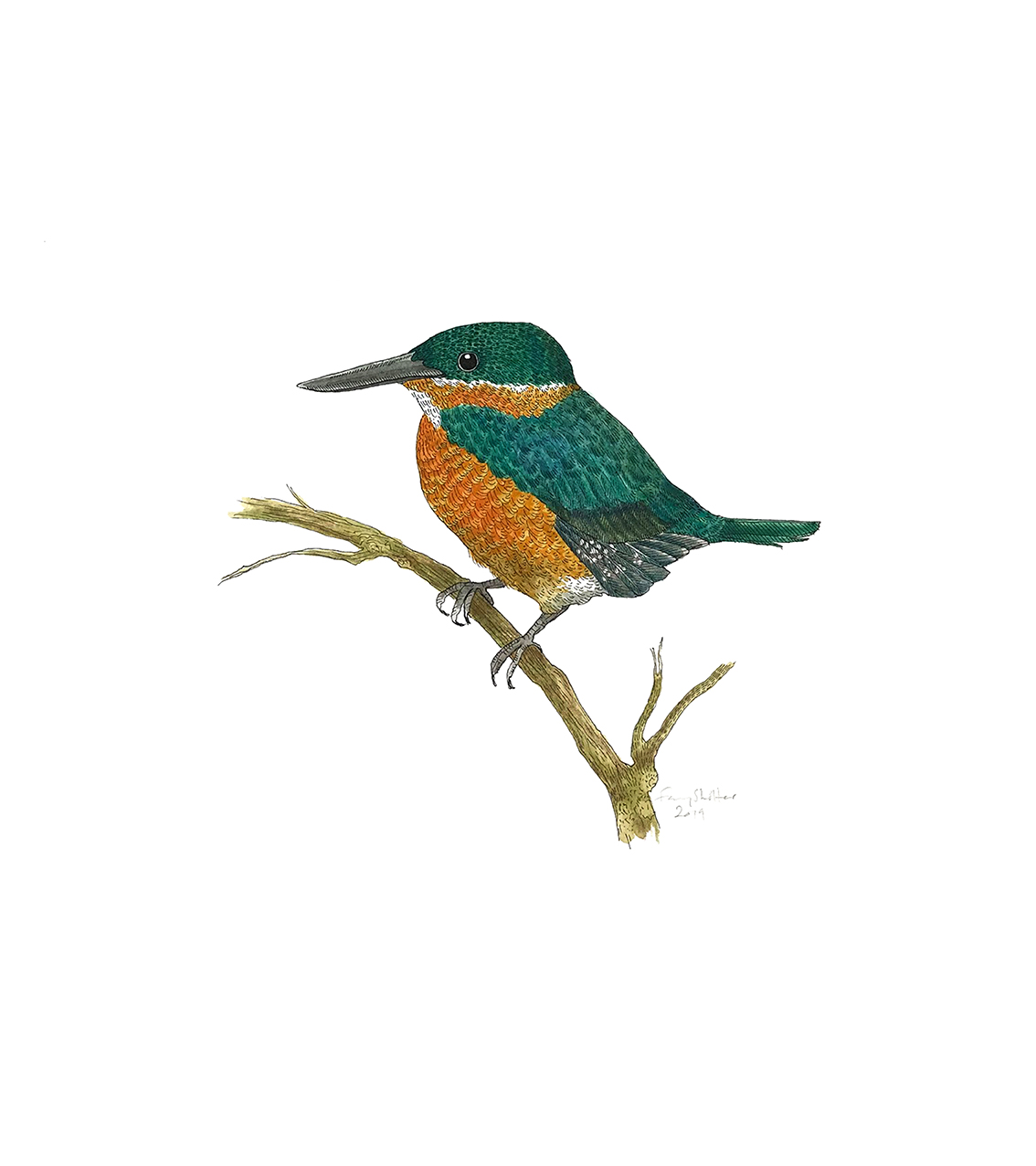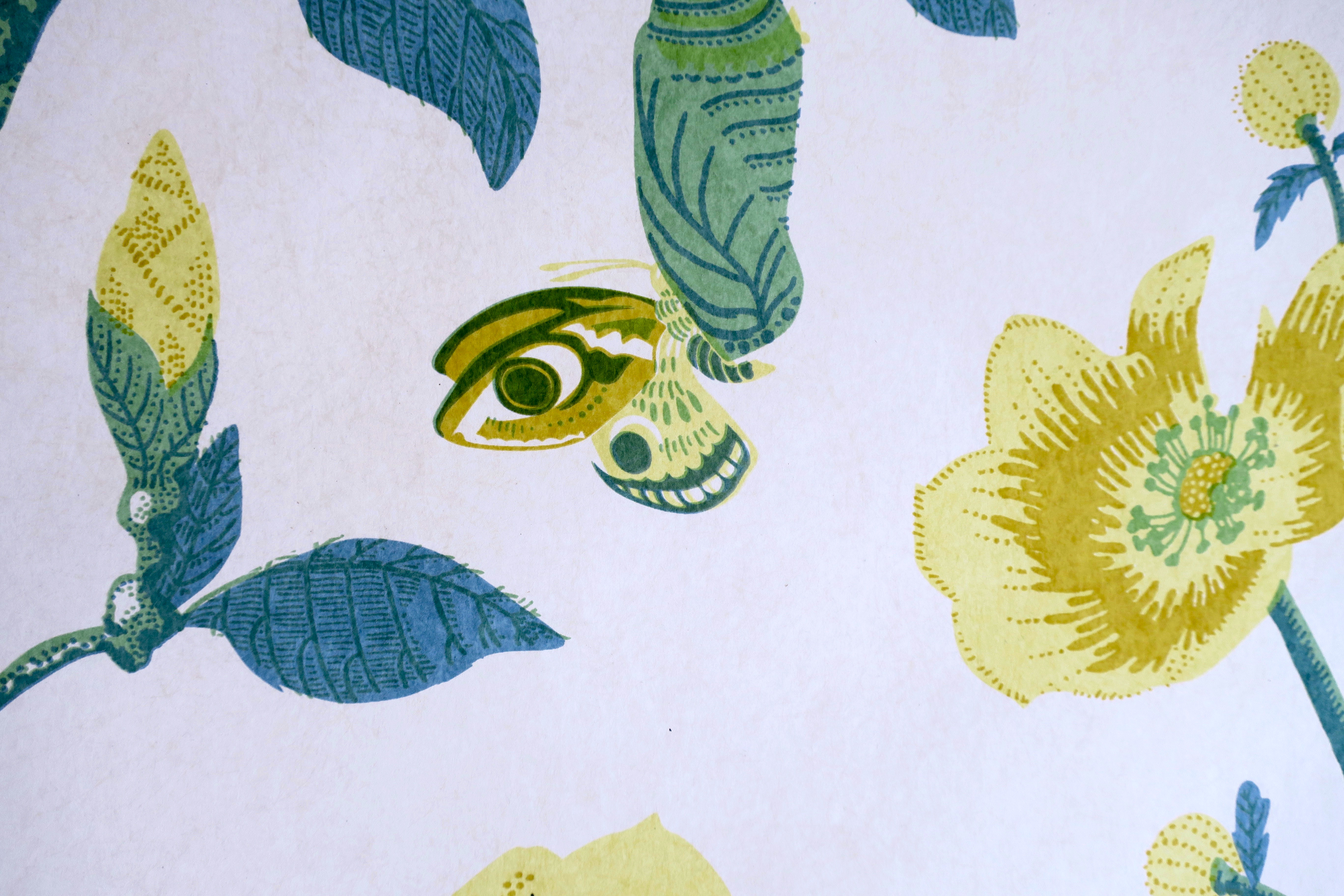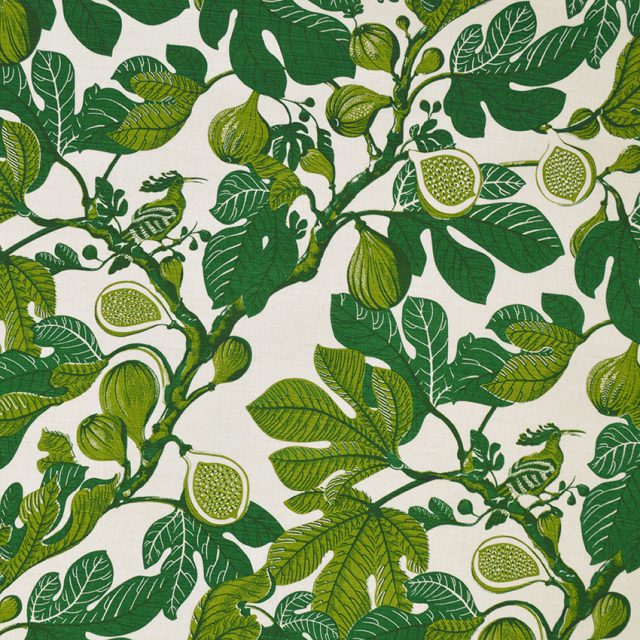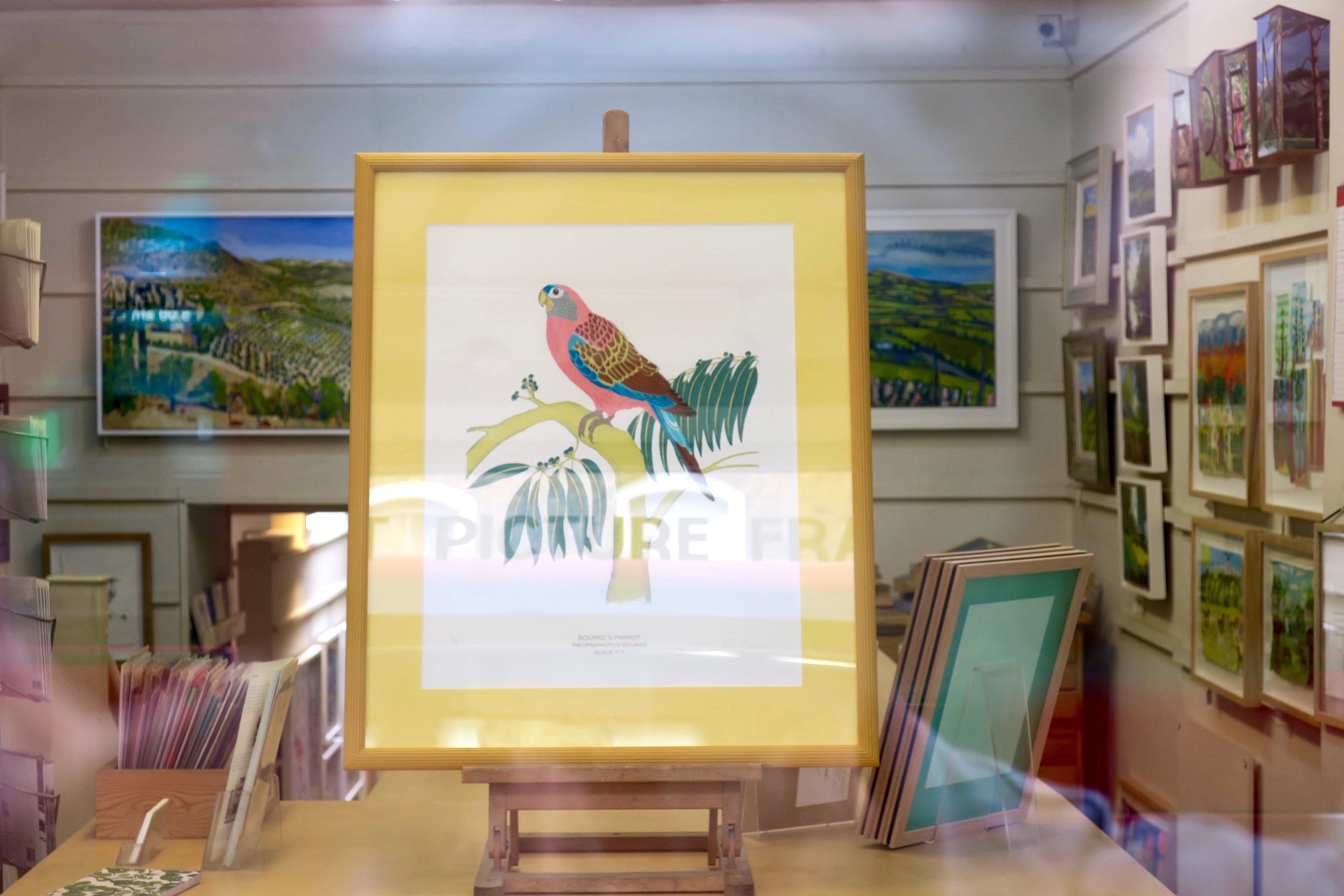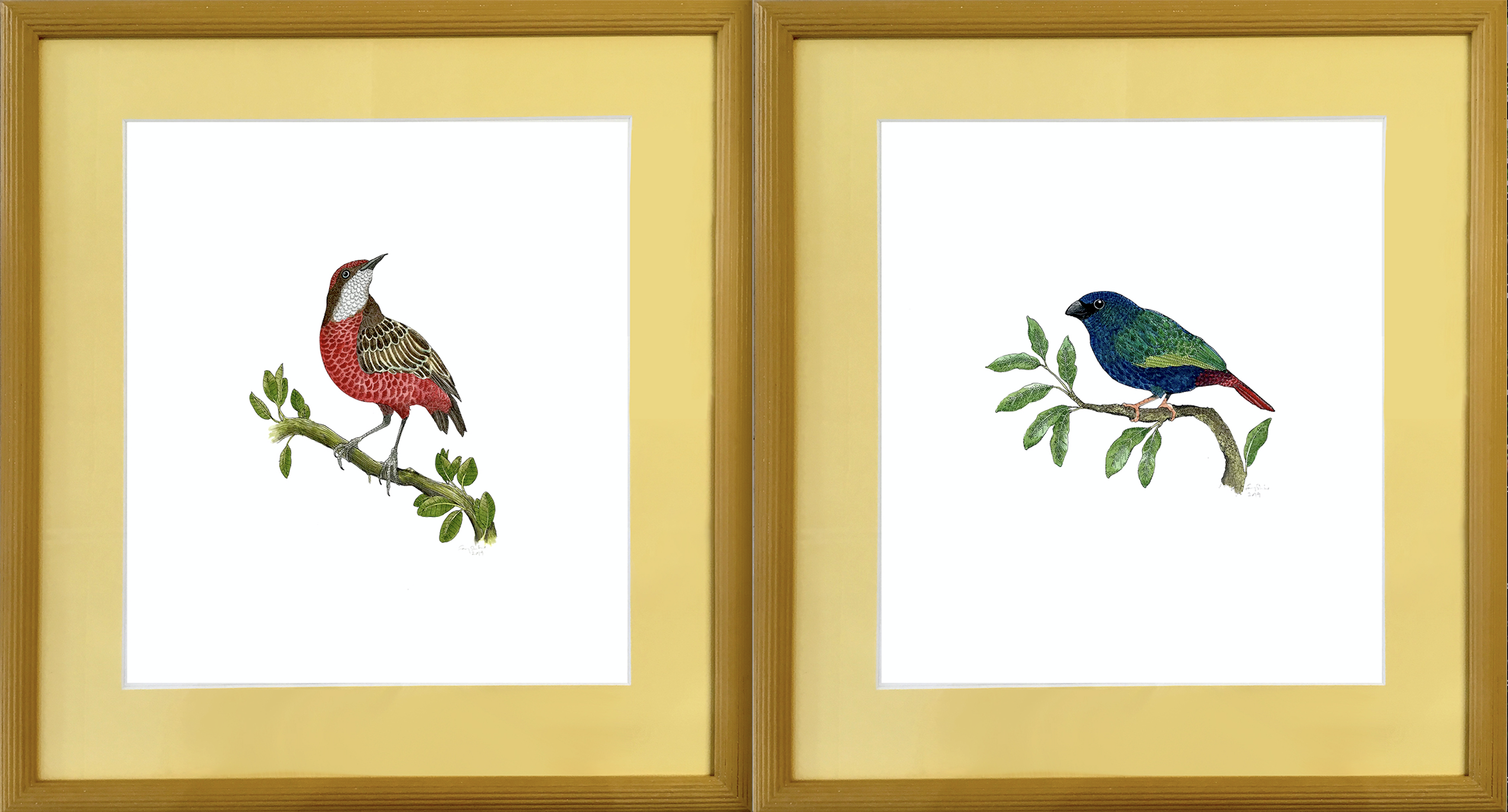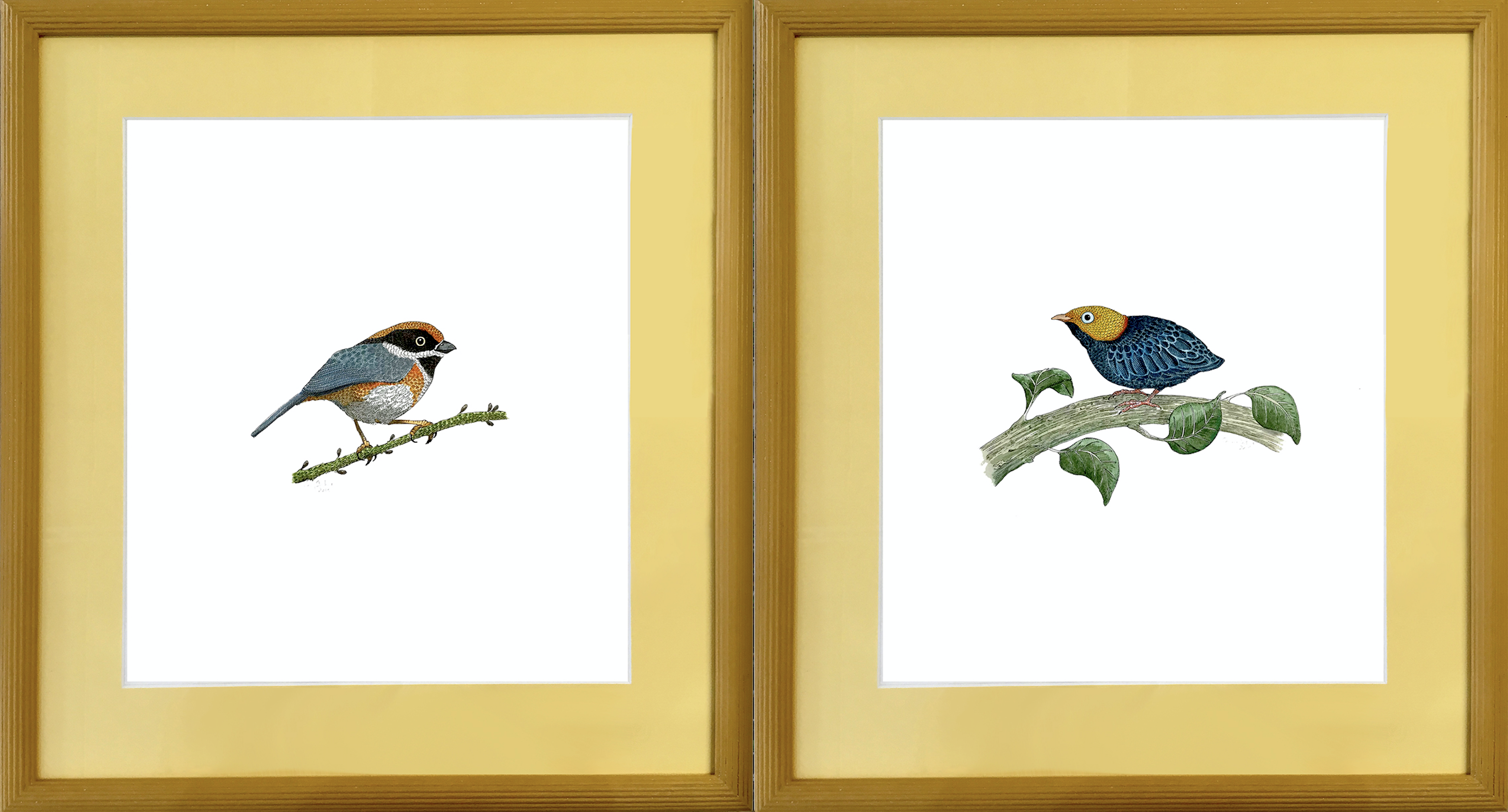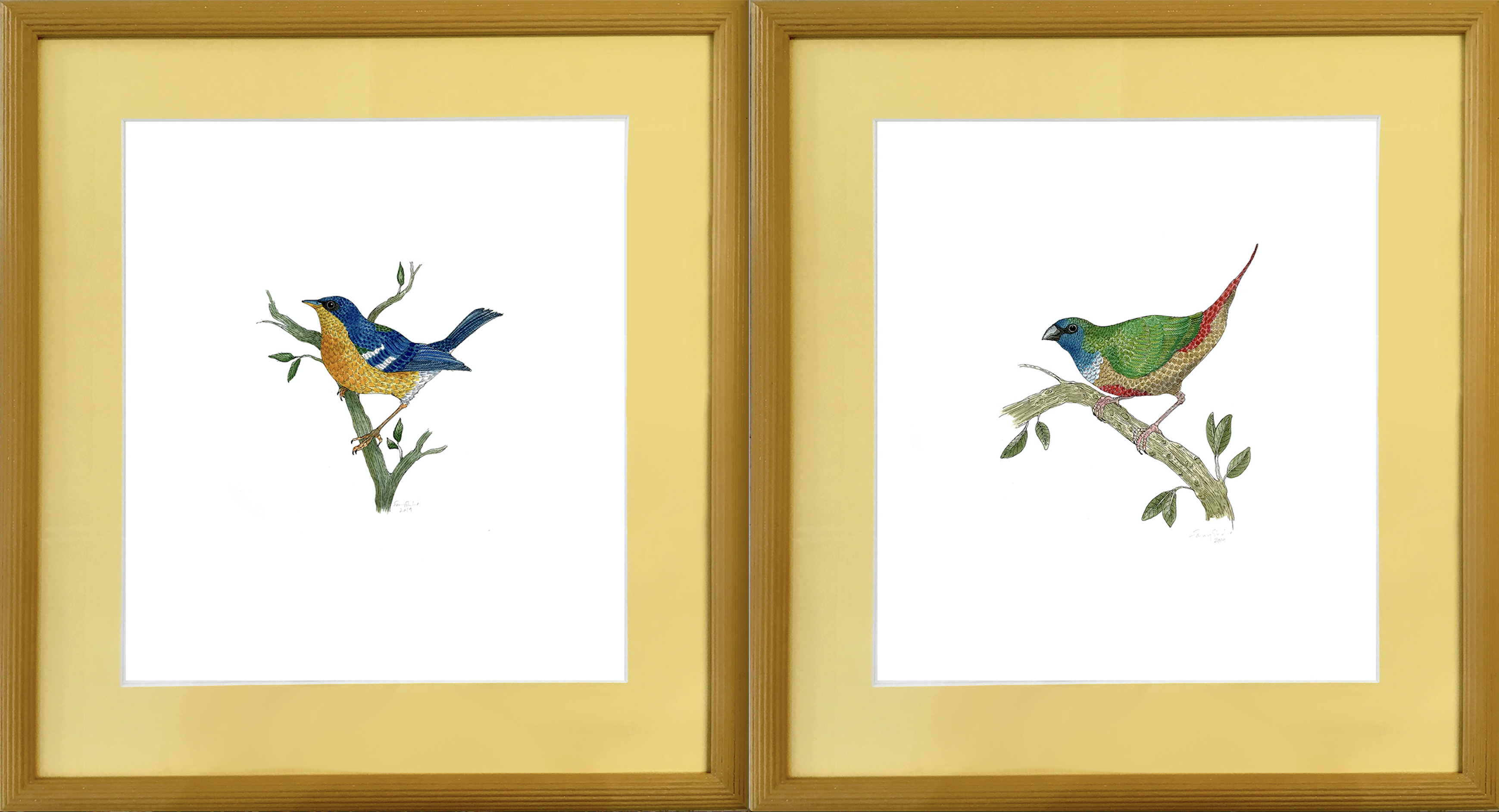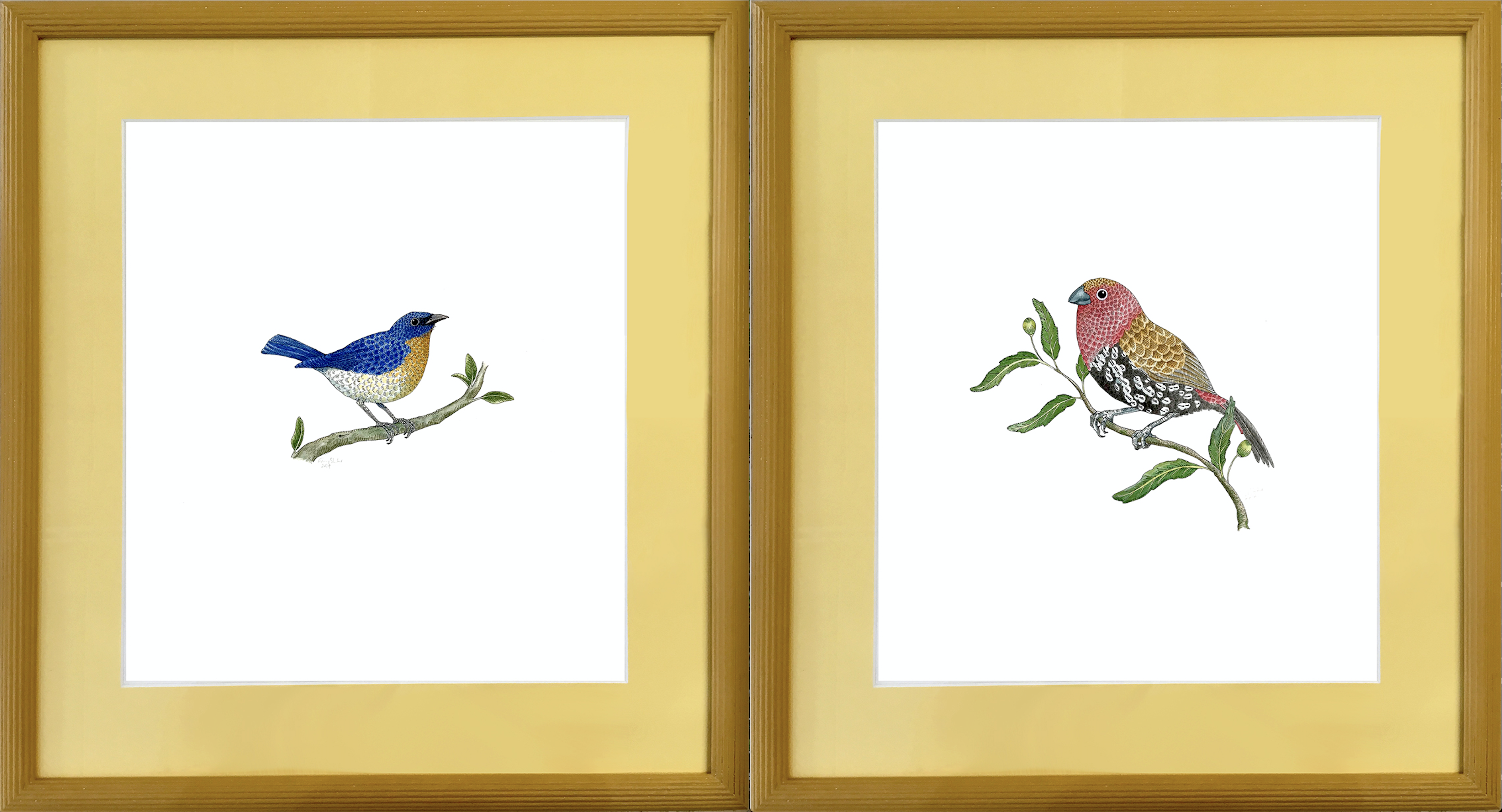And three parrots. Our window this month at the Rowley Gallery is home to a diverse flock of brightly coloured miniature tropical birds. It’s an aviary of twelve unique life-size watercolour paintings. The parrots are screen prints. And they are all by Fanny Shorter, whose work we have been lucky enough to show for the past ten years now, during which time she has developed from a printmaker of exquisite little birds and fishes into an internationally renowned textile designer. So it was a great pleasure to ask her to make twelve little paintings, just for a change.
And I think she enjoyed it.
www.instagram.com/fannyshorter
Black-throated bushtit (Aegithalos concinnus)
The black-throated bushtit is a small passerine, around 10.5 cm long and weighing 4-9 g. There is considerable racial variation in the plumage, but all subspecies have a medium length tail (as opposed to the long tail of the related long-tailed tit), a black throat and a black ‘bandit mask’ around the eye. The nominate race has a chestnut cap, breast band and flanks and dark grey back, wings and tail, and a white belly. The other subspecies have generally the same pattern (minus the chest band) but with grey caps or all grey bellies and flanks. Both sexes are alike.
It ranges from the foothills of the Himalayas, stretching across northern India through north-eastern Bangladesh, Nepal, Bhutan, northern Myanmar, Vietnam, and Taiwan. Disjunct populations also occur in southern Vietnam, the island of Hainan and further north in China up to the Yellow River. It lives in open broadleaf forest as well as pine forest, generally occurring in middle altitudes.
Pin-tailed parrotfinch (Erythrura prasina)
The pin-tailed parrotfinch is a common species of estrildid finch found in Southeast Asia: Malaysia, Brunei, Cambodia, Indonesia, Laos, Burma, Vietnam, and Thailand. It has an estimated global extent of occurrence of 10,000,000 km2.
It is found in subtropical/tropical in both montane and lowland moist forest, and is also found in bamboo thickets and rice plantations. Flocks of this species can do great damage to rice crops, and in parts of its range it is classed as a pest. The IUCN has classified the species as being of least concern. It is a popular cage bird.
Red-faced parrotfinch (Erythrura psittacea)
Blue flycatcher (Cyornis rubeculoides)
The blue-throated blue flycatcher (Cyornis rubeculoides) is a small passerine bird in the flycatcher family, Muscicapidae. It resembles Cyornis tickelliae but easily separated by the blue throat. The habitat of this species is a thicker forest than other species of flycatchers. The blue-throated flycatcher is found in much of the Indian Subcontinent, all through the Himalayas, the plains and Western Ghats of India in the cold months, and also extends eastwards into Bangladesh, and to Arakan and the Tenasserim Hills in Myanmar.
Golden-headed Manakin (Ceratopipra erythrocephala)
Like other manakins, the golden-headed manakin is a compact, brightly coloured forest bird, typically 3.7 in (9.4 cm) long and weighing 0.44 oz (12.5 g). The adult male is black apart from a golden cap, white and red thighs, pink legs and a yellowish bill. The female and young males are olive-green and resemble female white-bearded manakins, but are smaller, shorter-tailed and have pinkish (not bright orange) legs. Apart from the buzzing display song, the golden-headed manakin has a number of other calls, including a buzzing pir pir prrrrrt.
This manakin is found from Panama, Colombia and Trinidad south and east to the Guianas and Brazil and northern Peru. It is not found south of the Amazon or the Ucayali Rivers. It is a common bird of forests, second growth and plantations. Their upper altitudinal limit is usually about 3,600 ft (1,100 m), but they are occasionally found has high as c.5,000 ft (1,500 m) ASL. Like other manakins they eat fruit and some insects.
American Pygmy Kingfisher (Chloroceryle aenea)
The American pygmy kingfisher is 13 cm (5.1 in) long and weighs 10–16 g (0.35–0.56 oz). It has the typical kingfisher shape, with a short tail and long bill. It is oily green above, with a yellow-orange collar around the neck, rufous underparts and a white belly. The female has a narrow green breast band. Young birds resemble the adults, but have paler rufous underparts, no breast band, and speckled wings and flanks. The nominate southern C. a. aenea has two lines of white spots on the wings, while the northern C. a. stictoptera has three or four lines of spots and a concealed white patch of feathers on the undertail. The two forms intergrade in central Costa Rica.
The call is a weak tik or stony cht cht.
This tiny kingfisher occurs in dense forests and mangrove swamps along small streams or rivers with heavily vegetated banks. The unlined nest is in a horizontal tunnel up to 40 cm (16 in) long made in a river bank, earth heap, or occasionally an arboreal termite nest. The female lays three, sometimes four, white eggs.
American pygmy kingfishers perch quietly on a low branch close to water before plunging in head first after small fish or tadpoles. They will also hawk for insects. They are not shy, but easily overlooked as they sit silently amongst riverside branches.
Fanny has a great eye for detail.
This design is from ‘Garden of the Gods’, a collection of hand-printed interiors fabrics inspired by the Greek island of Corfu and zoologist Gerald Durrell’s books, narrating his time spent there as a child in the 1940s… ‘Fig’ depicts Hiawatha, a hoopoe rescued by Gerry in ‘My Family and Other Animals’, hiding in a fig tree.
American Pygmy Kingfisher / Loten’s Sunbird
Crimson Chat / Tricoloured Parrotfinch
Black-throated Bushtit / Golden Headed Manakin
Tropical Parula / Pin-tailed Parrotfinch
Blue Flycatcher / Pink-throated Twinspot
Red-faced Parrotfinch / Red-cheeked Cordon-Bleu

Come and see for yourself. It’s a spectacular window.
They’re singing everyday, dawn chorus to choral evensong, right through July.
Fanny Shorter / The Rowley Gallery


